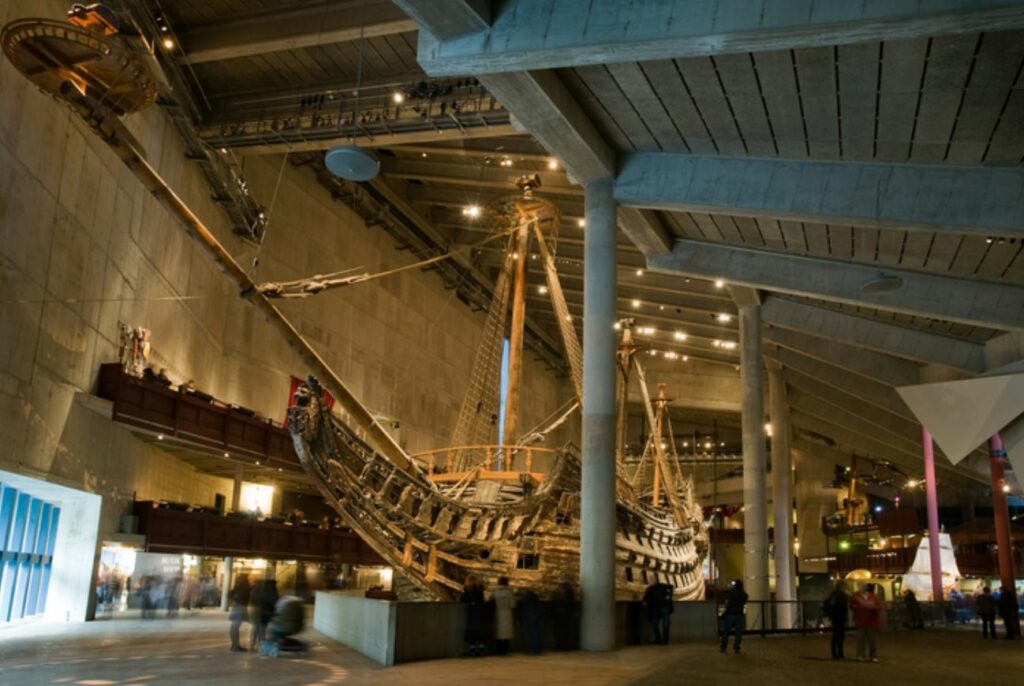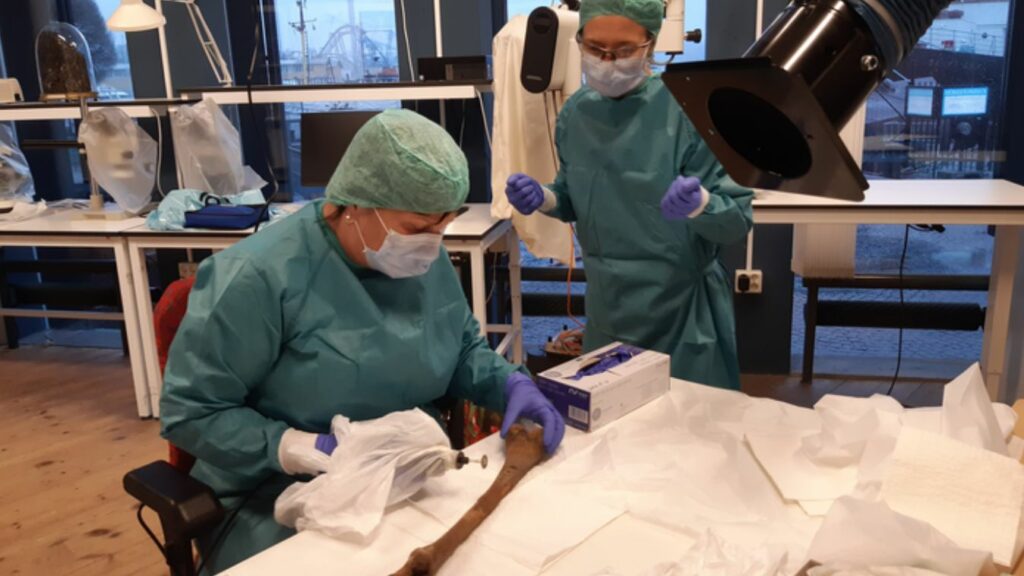Vasa Warship’s Skeleton G Identified as a Woman: New Research Reveals Long-Hidden Truth
Upon conducting an investigation into the human remains discovered on the Vasa warship, it was initially concluded that the skeleton labeled as G belonged to a male. However, recent research indicates that the skeleton, previously believed to be male, is actually from a female.
During the maiden voyage of Vasa in 1628, approximately 30 individuals lost their lives due to the ship’s sinking. While written sources only name one of these individuals, the identities of the remaining casualties remain unknown. Upon the ship’s recovery in 1961, a thorough archaeological excavation took place, revealing numerous human bones onboard that were closely examined.
“Through osteological analysis, it has been possible to discover a great deal about these people, such as their age, height and medical history,” explains Dr Fred Hocker, director of research at the Vasa Museum, in Stockholm, Sweden.
“Osteologists recently suspected that G could be female, on the basis of the pelvis. DNA analysis can reveal even more.”
The Vasa Museum and the Department of Immunology, Genetics, and Pathology at Uppsala University in Sweden have been working together since 2004 to examine all of the remains from Vasa and learn as much as we can about each victim. The project’s first emphasis was on determining if individual bones belonged to a specific person. Marie Allen, a forensic genetics professor, has spearheaded the research.

“For us, it is both interesting and challenging to study the skeletons from Vasa. It is very difficult to extract DNA from bone which has been on the bottom of the sea for 333 years, but not impossible,” says Marie Allen, adding, “already some years ago we had indications that skeleton G was not a man but a woman. Simply put, we found no Y-chromosomes in G’s genetic material. But we could not be certain and wanted to confirm the result”.
Following an interlaboratory study conducted with Dr. Kimberly Andreaggi, from the Armed Forces DNA Identification Laboratory (AFMES-AFDIL) in Delaware, USA, the findings have been validated. The AFMES-AFDIL is a laboratory under the American Department of Defense, focused on DNA testing for human remains of deceased military personnel. The lab has developed a new testing technique for examining numerous genetic variants.

“We took new samples from bones for which we had specific questions. AFMES-AFDIL has now analysed the samples, and we have been able to confirm that G was a woman, thanks to the new test,” explains Marie Allen.
Marie Allen and Kimberly Andreaggi are using the skeletons of the Vasa to improve their forensic methods. These methods can then be used to look at DNA in criminal investigations or to identify soldiers who have died in battle.
In the museum’s ongoing investigation into the ship’s crew, the findings of the DNA study constitute a crucial piece of evidence. The museum’s historian and researcher, Dr. Anna Maria Forssberg, explains:
“We want to come as close to these people as we can. We have known that there were women on board Vasa when it sank, and now we have received confirmation that they are among the remains. I am currently researching the wives of seamen, so for me this is especially exciting, since they are often forgotten even though they played an important role for the navy.”
Additional findings are anticipated from the recently obtained samples. Marie Allen and Kimberly Andreaggi are expected to provide information on the physical characteristics of the individuals, including their hair and eye color, and potentially the geographical origins of their families. These results are expected to be released shortly.
“Today we can extract much more information from historic DNA than we could earlier and methods are being continuously refined. We can say if a person was predisposed to certain illnesses, or even very small details, such as if they had freckles and wet or dry ear wax,” adds Marie Allen.
The researchers at the Vasa Museum are conducting a comprehensive analysis of the skeletons found onboard the Vasa, which includes an examination of the personal belongings recovered alongside them. The results of this research will be showcased in an upcoming exhibition at the museum, as well as in a book detailing the individuals who lost their lives on the Vasa.
Image Credit: Anna Maria Forssberg, Vasamuseet/SMTM
